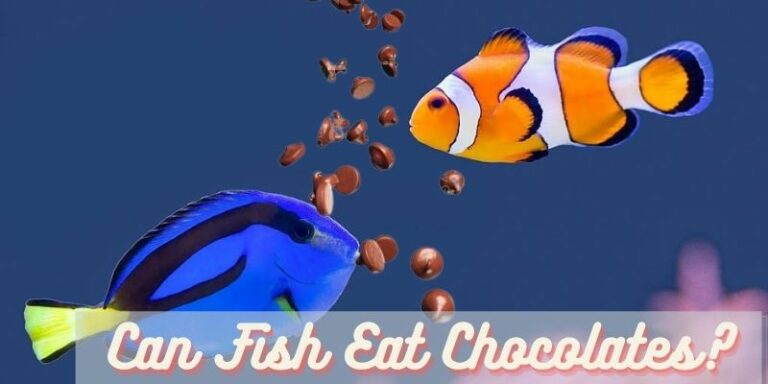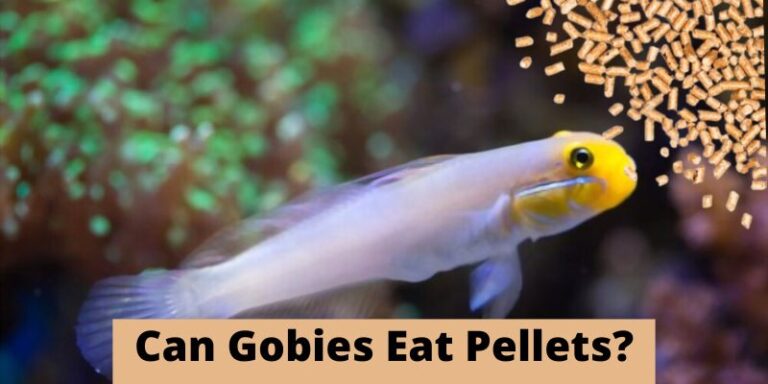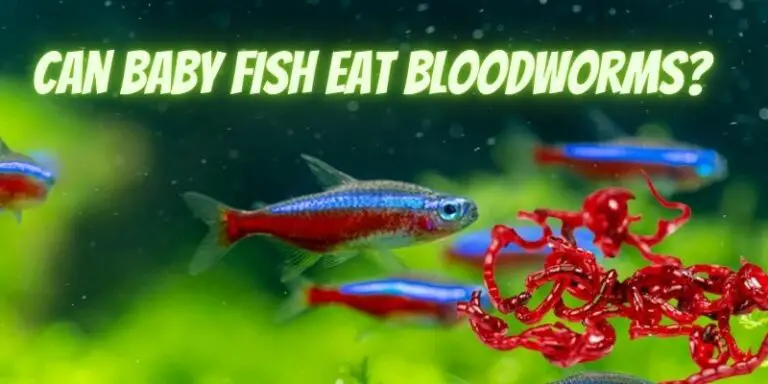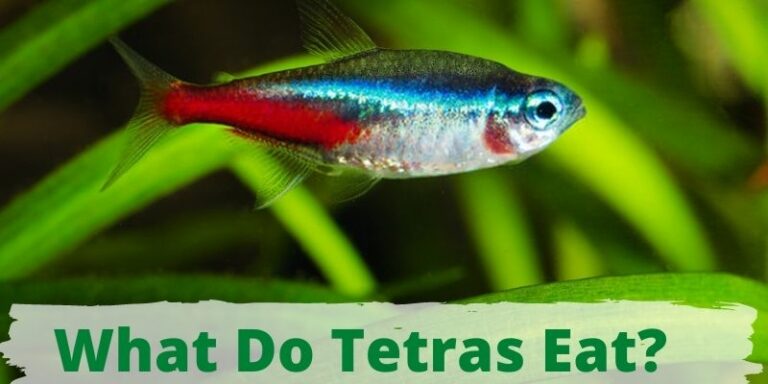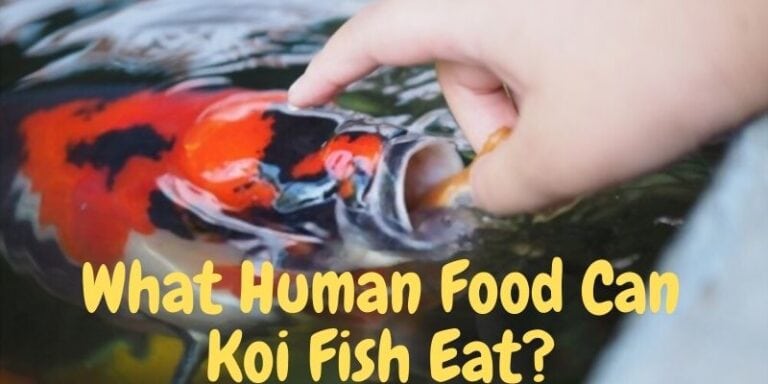What Do Gouramis Eat? (Diet Guide & Feeding Tips)
Gouramis belong to a diverse group of freshwater fishes. Such diversity of variations within the family brings variation to the diet and feeding preferences as well. They are scavengers, and gouramis eat almost anything that seems to be compatible with their mouth.
What Do Gouramis Eat In The Wild
In the wild, gouramis usually eat small insects, worms, and larvae floating on the surface of the water, while some species are fed on algal growth and plant materials. Gouramis are also known to eat fry fish or small fish that easily fit in their mouth.
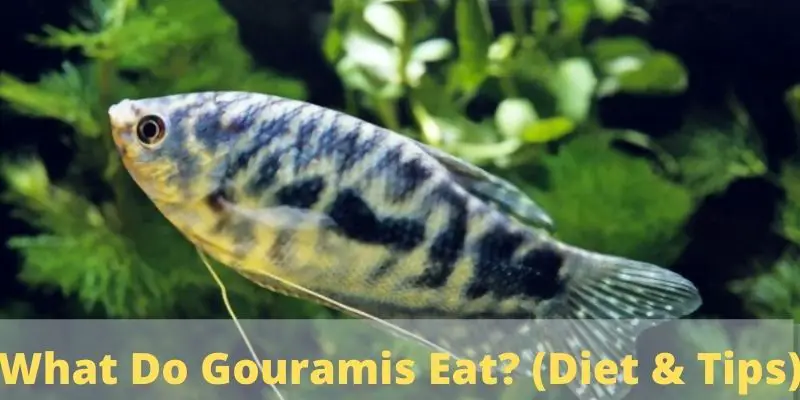
Few species like pikehead gourami are also known for being ambush predators as they attack small fish by laying an ambush on them.
What Do Gouramis Eat In Captivity?
Feeding gouramis in captivity is not a big deal. They feed on everything you provide without being reluctant, thanks to their scavenging nature.
However, it’s of prime importance to balance the gouramis diet with different foods to ensure they are getting enough nutrition.
You Might Also Like: What Do Guppies Eat? (A Diet Guide To Feed Guppy Fish)
Focusing on one particular diet can cause malnutrition, impacting your vibrant and enigmatic gourami in the wrong way.
The balanced proportion of the protein-containing meaty foods and veggies would provide a nutrient-rich amalgamation to your gouramis. The general rule of thumb is to follow a 50/50 proportion.
Half of their food should contain frozen or fresh meaty foods, and half should contain veggies or green matter.
Live foods should be kept on the menu as a treat but not a dietary staple. Frozen foods are best for their daily feedings.
As far as the food itself is concerned, Mysis shrimp, vitamin-enriched brine shrimp, glass worms, tubifex worms, bloodworms, and other small crustaceans serve the purpose.
Mosquito larvae and fresh daphnia can also be added to the menu as a part of the occasional live treat. Vegetables like spinach, cooked peas, and lettuce are the best vegetation for gouramis.
Vegetables are also known to trigger the onset of spawning. So, to get them to spawn, you can increase the veg content of their food.
Commercially prepared fish foods of both the veg and protein types are also acceptable as long as their quality is high. High-quality algae flakes bring out the best vibrancy in gouramis colorful bodies.
What Do Honey gouramis eat?
These are some of the small variants of the gourami family. People often confuse them with dwarf gouramis because their sizes merely reach 2 inches maximum. Honey gourami is an omnivorous feeder and is not a picky eater at all.
Paradise Gourami: Size, Lifespan, Behavior, Diet, Breeding, Care, Tank
Anything eatable, meaty or veggie is honey gourami’s food. Feeding them in the home aquarium is just very easy because they do not need any particular kind of food, nor do they have any preference. Bulleted below is the list of food for honey gouramis.
- Small crustaceans (Frozen preferred) including brine shrimp, amphipods, and copepods.
- Zooplanktons
- Small insects and their larvae
- Vegetables on your dining table
- Aquarium plants (honey gouramis nip also nip on the leaves of plants in the tank)
- Fruits
- High-quality flakes and other prepared fish foods.
They accept every food that you provide them. The only thing to be taken care of is to make sure not to overfeed them. Feeding them twice a day is more than enough.
They can’t stand overfeeding. It can cause severe complications of the digestive system, leading to the end of their charismatic life.
What Does Kissing Gourami Eat?
Kissing gourami or kisser fish are the most unique of all the gouramis. They get their name because of a unique morphological trait.
They are toothless and use their lips to perform rasping actions. This rasping action resembles kissing or what we know as lip-lock.
Vegetation constitutes a significant portion of their diet. In the wild, kissing gourami eat benthic algae and plant matter.
They rasp the algae from stones and rocks while supplementing their diet with planktonic creatures as well. They also feed on small insects.
Kissing gourami exhibit microphagous or filter types of feeding in which small nutritional particles and small planktonic creatures are filtered through their gill rakers.
However, a major portion of their diet comes from rasping or grazing on algae and plant materials.
As far as feeding them in the home aquarium goes, it’s pretty easy to get them on accepting the foods. As they are jawless fish, they cannot crush or chew the food.
Considering this, the ideal food for kissing gouramis is supposed to be high-quality commercial foods like flakes and small pellets that can easily be softened by water. Their tank should contain live rocks for them to rasp on.
This staple diet needs to be supplemented with algae wafers, lettuce, spirulina, live or frozen bloodworms, brine shrimp, tubifex worms, and artemia. Feed them twice a day, not more than which they can finish in 3 to 5 minutes.
Feeding Tips for Kissing Gouramis
- If you feed them with one particular food for quite some time, try to alternate the menu by adding another nutritional element to balance the foods’ quality and quantity.
What Do Dwarf Gouramis Eat?
Dwarf gouramis are one of the most popular gourami varieties in this hobby. They are omnivorous and inhabit areas of the rivers and freshwater bodies densely grown with vegetation.
Dwarf gouramis feed on algal matter, small insects, larvae, and other tiny planktonic organisms in the wild. They are famous for coming out to the water surface to hunt down small insects that fly over the surface.
In captivity, their diet should be a blend of balanced nutrition. Balanced nutrition is necessary for their vibrancy and increases fertility by stimulating the spawning behavior.
High-quality flakes, mainly algae flakes, freeze-dried or frozen bloodworms, and vegetable tablets provide them with almost all the requisite nutrients. The addition of occasional live foods such as live worms to this menu would be of great value.
Be cautious with live foods as they can transmit parasitic infections to your healthy fish. So make sure that the live foods are coming from a hygienic environment.
Vegetable pellets and flake foods are considered the best diet to induce them to spawn. So, for them to breed, increase the veg content in your food without altering the periodic balance of a balanced routine.
Making small pieces of the foods would be best as their mouth is too small to take large chunks.
Dwarf Gourami Food List
Considering all that just being said, we can compile a food list for what dwarf gouramis eat? So we can bring the best out of them. Here goes the list.
- High-quality algae flakes can be used as their dietary staple as they contain a good proportion of the nutrition required.
- Vegetable tablets and fresh vegetables are best to give them veg part of their diet.
- Frozen foods like bloodworms, brine shrimp, Mysis shrimp, tubifex worms, and artemia are meat-based diets readily accepted by dwarf gouramis.
- Captive-raised mosquito larvae are best given as live foods.
- Tropical fish flakes like Omega One’s Freshwater flakes and Bug Bites Formula are the best commercial foods for your dwarf gouramis.
- Algae wafers and veggies wafers are equally beneficial as well.
How Often Should I Feed Gourami?
Feeding is the most enjoyable part for any hobbyists as it indulges them in a desire to come up with the best nutrition every single time. Feeding your gouramis is no different as well.
Usually, gouramis feedings vary between 2-3 feedings per day depending on what type of gourami you are dealing with. Most gouramis require to be fed twice a day. The amount of food they can finish within 3 to 5 minutes is just fine.
You Might Also Like: How Often To Feed Fish & How Much (A Proper Fish Feeding Guide)
If you notice the leftovers in the tank and your gourami’s appetite seems to be decreased, that means you are overfeeding your fish. Believe it or not, this isn’t any love to keep your gourami’s tummy full all the time.
Overfeeding comes with severe complications to the digestive system. Malfunctioning of the digestive system is the ultimate killer, ready to sway away your gourami.
Feed once a day if you think you have done overfeeding. It will give your fish time to digest the food efficiently.
Feeding tips
Follow the alteration formula of feeding. The alteration formula means to rotate every day’s feedings.
For instance, if you are feeding flakes to your gouramis in the morning, then come up with a portion of a frozen diet along with some veggies in the evening.
Do Gouramis Eat Smaller Fish?
Yes! Most of the gouramis are somewhat timid, but being scavengers, gouramis feed on anything that fits in their mouth. Some types are predatory as well.
For example, pike head gourami, an ambush predator, hunts down other small fishes that they think are compatible enough to be fed.
Wrap up
The Gourami diet consists of various types of foods. Gouramis can eat several delicious foods as discussed above. It would be best to feed gouramis a balanced diet with meat and veggies.
Also, you should not overfeed them with foods, and the number of feeding times should be within the limit as discussed above. This diet will help them to grow healthier.
